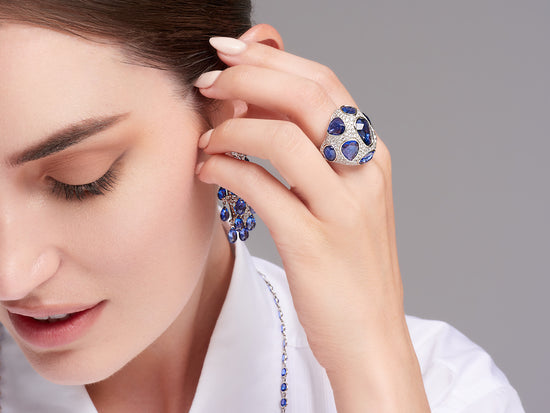From graduation to your first job interview to your daughter's wedding, pearls are the quintessential accessory for the most important moments in your life. Now worn by both women and men, pearls have always stood the test of time due to their versatility.
While you may have a classic pearl necklace or bracelet, there are so many other designs for pearl jewelry that you should explore. But before you add more to your collection, you should understand how to take care of your pearls, how culturing happens, and what you should consider when you’re about to pair your pearls with any outfit. And at Brandon Boswell Diamonds, we have an outstanding variety of authentic pearl jewelry to choose from.
Where do pearls come from?
While gemstones typically form within the ground, pearls are reared inside shellfish, namely two-shelled “bivalve” mollusks like freshwater mussels and marine oysters. These gemstones are composed of layers of calcium carbonate that are known to us as nacre or “skin”.
According to the GIA, natural pearls were first discovered in the Arabian Gulf. Many natural pearls were sourced from this region for a number of years. These pristine “oriental pearls” are high-value and have a nacre that’s beautifully lustrous and transparent.
Akoya Vs. South Sea Pearls
Akoya and South Sea pearls are sourced from different regions of the world: Akoyas from East Asian countries and South Sea pearls from South Sea countries. Because they come from bigger mollusks, South Sea pearls can be much larger, making them more valuable and expensive.
For more information, read our breakdown of different pearl types and what determines pearl quality.
Pearl Culturing, the Process
Millions of oysters are farmed annually, but only a few produce worthy pearls.
Oyster shells can’t be forced open more than three inches, so expert technicians must work carefully to prepare the oyster to form a pearl. The specialists irritate the oyster by surgically implanting a shell bead or grain of sand and some mantle tissue inside of the oyster. A pearl forms around the foreign bit that irritated the oyster. The irritation stimulates pearl growth. The foreign particle becomes the future pearl’s nucleus that nacre forms around. The oysters are suspended in rafts and grow in bays laden with nutrients. During the winter, the oysters are transferred to warmer waters where they’re closely monitored and nurtured. Occasionally, oysters bearing pearls are extracted for cleaning and parasite prevention.
Depending on its size, a pearl takes six months to years to fully form. Once it is ready, a pearl is removed, treated, and matched with nearly identical pearls to be crafted into breathtaking jewelry pieces.
Preparing Pearls to Become Jewelry
After collection, pearls are left to soak in a mild cleaning solution for days under a strong fluorescent light. Once this step is completed, pearls are polished in a wooden container full of finely crushed walnut shells. Oils infused in the walnut shells allow for the pearls to be polished and protected. Prepared pearls are matched together by luster, shape, size, and the other quality factors.
The value of genuine pearl jewelry varies depending on seven quality factors. Grading systems are subjective and specific to each type of pearl. The Japanese Akoya Pearl Grading A-AAA scale is the most strict.
Style Guide
Jewelry pieces consisting of bigger, chunkier pearls are statement pieces and may allow more room for creative design. Our Tahitian Pearl Necklace is made up of pink sapphire rondelles and silver Tahitian pearls. Mixed pearl and gemstone pieces can add flair and glamour to any attire.
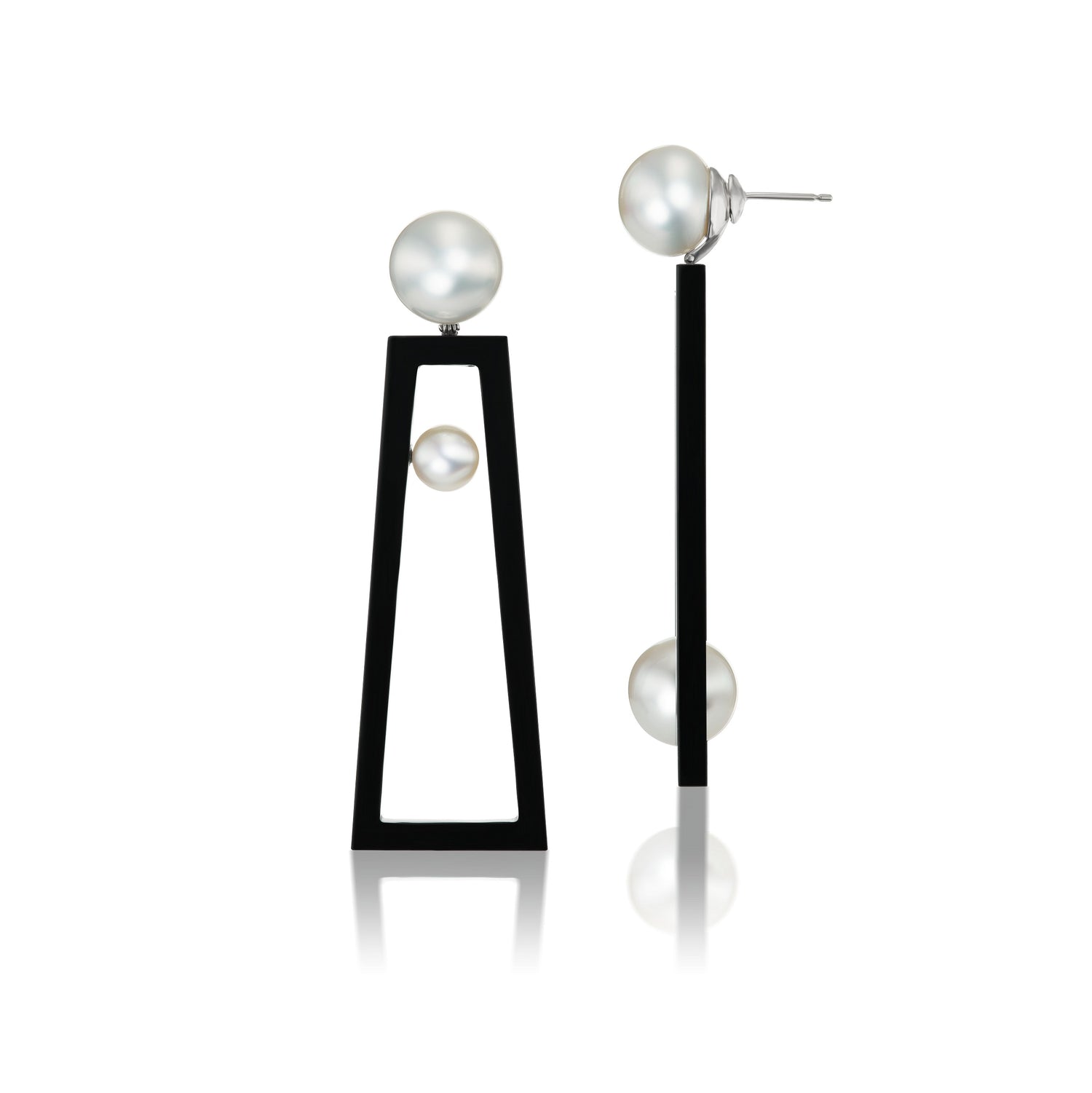
South Sea Pearl, Akoya Pearl, and Black Jade "Frame" Earrings
Our emerald and pearl earrings are glamorous and timeless, whereas our black akoya pearl earrings are a stunning geometrical mid-century modern design that exudes great taste. Moreover, we have a La Feuille South Sea Pearl and Diamond Earrings and Necklace Set that is perfect for the most elegant moments such as galas, weddings, and evenings at the theater.
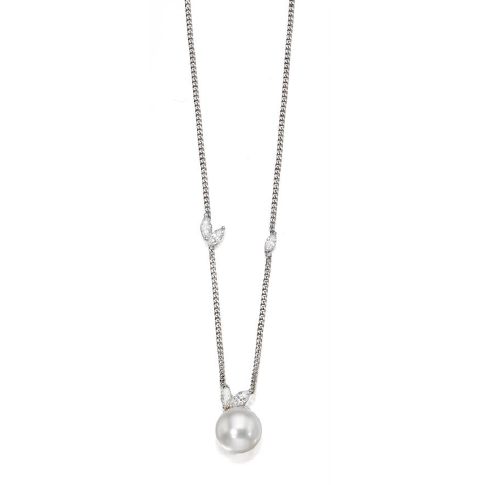
La Feuille South Sea Pearl and Diamond Necklace
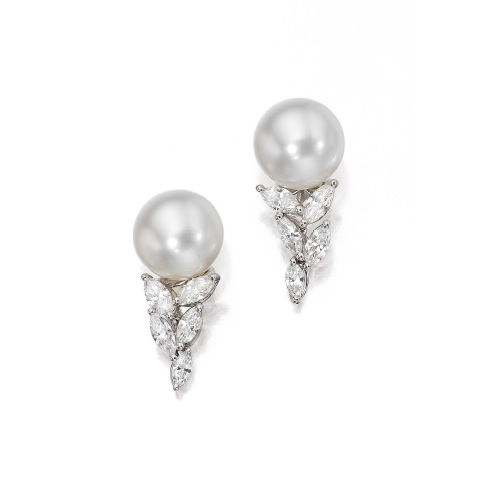
La Feuille South Sea Pearl and Diamond Earrings
Perhaps you are wondering, what colors can pearls be naturally? Pearls come in many colors. Akoya pearls are most commonly cream or white. Tahitian pearls, such as our Small Bubble Tahitian Pearl Earrings, can have many naturally different colored pearls such as peacock, bronze, or gray tones.
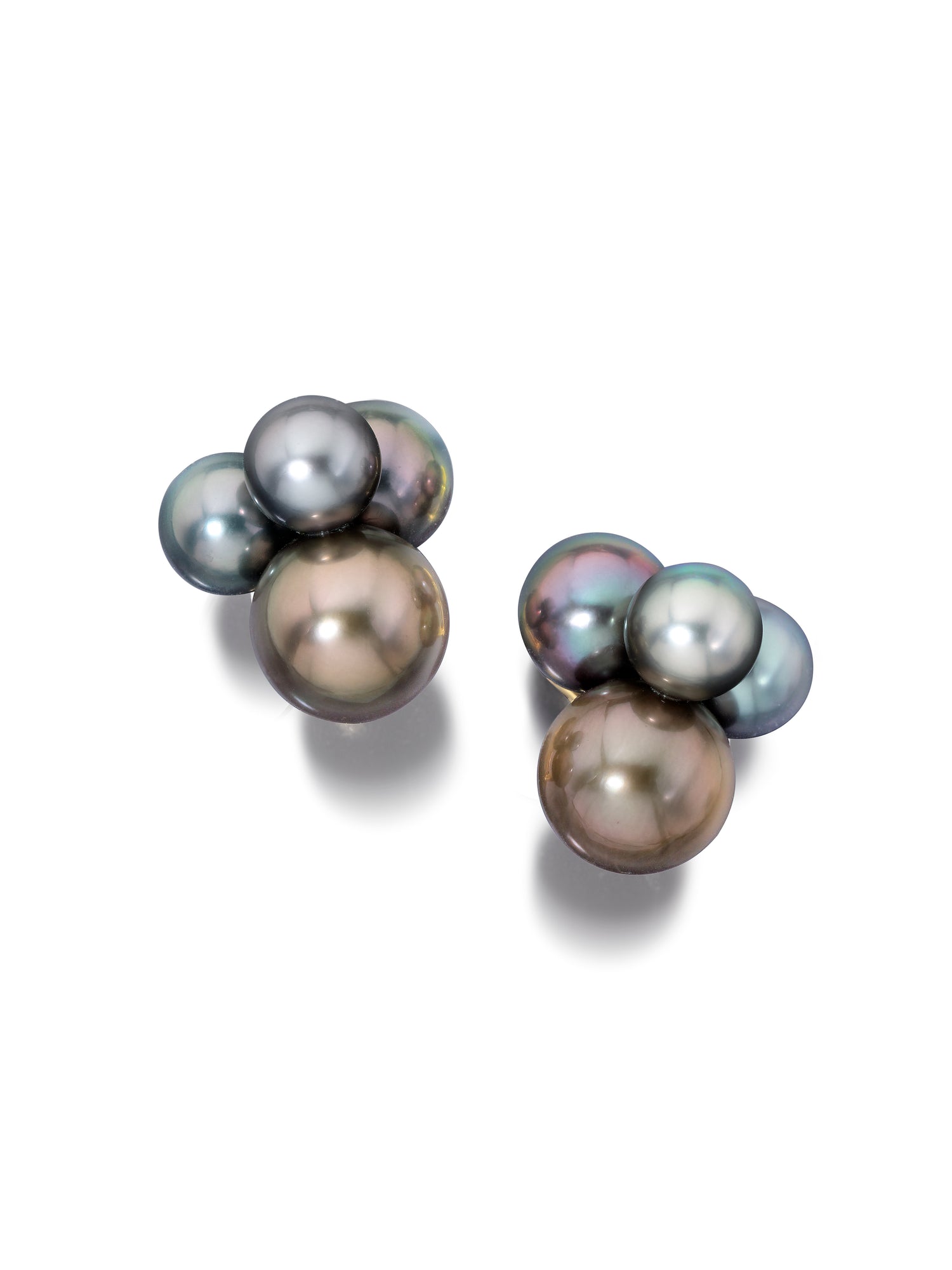
Small Bubble Tahitian Pearl Earrings
Our regal “Opera Strand” Pink Pearl and Diamond Necklace showcases 63 light pink pearls and over 4 carats of diamond rondelles. The tone of our light pink pearl necklace is simply astounding, and will complement a fair skin tone perfectly.
Now that 2024 is almost here, freshwater pearl jewelry is trending. Our Freshwater Pearl Bangle happens to be one of our favorite designs of the season.
Classic or contemporary, minimalist-style pearls go well with smart casual ensembles and formal outfits. Furthermore, you’ll never tire of them, and these precious gemstones are versatile enough to adapt to your evolving personal style and pass along to your grandchildren.
How to Clean And Revive Pearls
Pearls are quite susceptible to damage and wear, so they must be cleaned gently.
Prepare a cleaning solution made up of warm (not hot) water and a mild dish soap. Dampen a very soft cloth and gently wipe your pearls for a quick surface shine. Make sure to use a dry, soft cloth to dry your pearls after cleaning.
If you notice your pearls starting to yellow, refrain from using DIY cleaning methods that might damage the pearl, the metal, and diamonds in your jewelry. Bring your pearl jewelry to an expert jeweler to restore your piece without causing damage.
How to Maintain Pearls In Good Condition
This might be surprising, but pearls don’t do well in airtight storage. Pearls can dehydrate when stored for too long in dry conditions and develop small fractures, and possibly even crack.
The best way to ensure the longevity of your pearls is to wear them as often as possible!
Amazingly, natural oils from skin add to the pearls’ radiance and preservation. Pearls are porous gems that require a degree of moisture, unlike most gemstones.
Pearls are rather delicate, so here is what you should avoid while wearing pearls.
- Do not have your pearls come in contact with perfume. Chemicals in perfumes can break down nacre and dull a pearl’s radiance.
- Do not get your pearls wet, since water can destroy the thread holding pearls together and can even ruin the pearls. If you do get your pearls wet, make sure to dry them off with a soft cloth.
Conclusion
Pearls themselves are unlikely to trigger allergies, making them wearable for all who want to enjoy them, including those with sensitive skin. With the right care, this precious, ancient gemstone will endure over the years and never go out of style.
These vibrant gemstones are the only kind created inside living creatures and are full of life. When it comes to pearl jewelry, there are many variations to choose from. Whatever your style, there’s a pearl piece for you.
Wondering what you’ll find at Brandon Boswell Diamonds? Explore genuine pearl bracelets such as the Tahitian Pearl Bracelet and South Sea Pearl Bracelet. You’ll certainly find a piece that catches your eye among the diverse assortment of designs we have.
Should you ever want new pearls, visit us at Brandon Boswell Diamonds, the premiere destination for luxury jewelry in Palm Desert, to indulge in a shopping experience you won’t soon forget.






